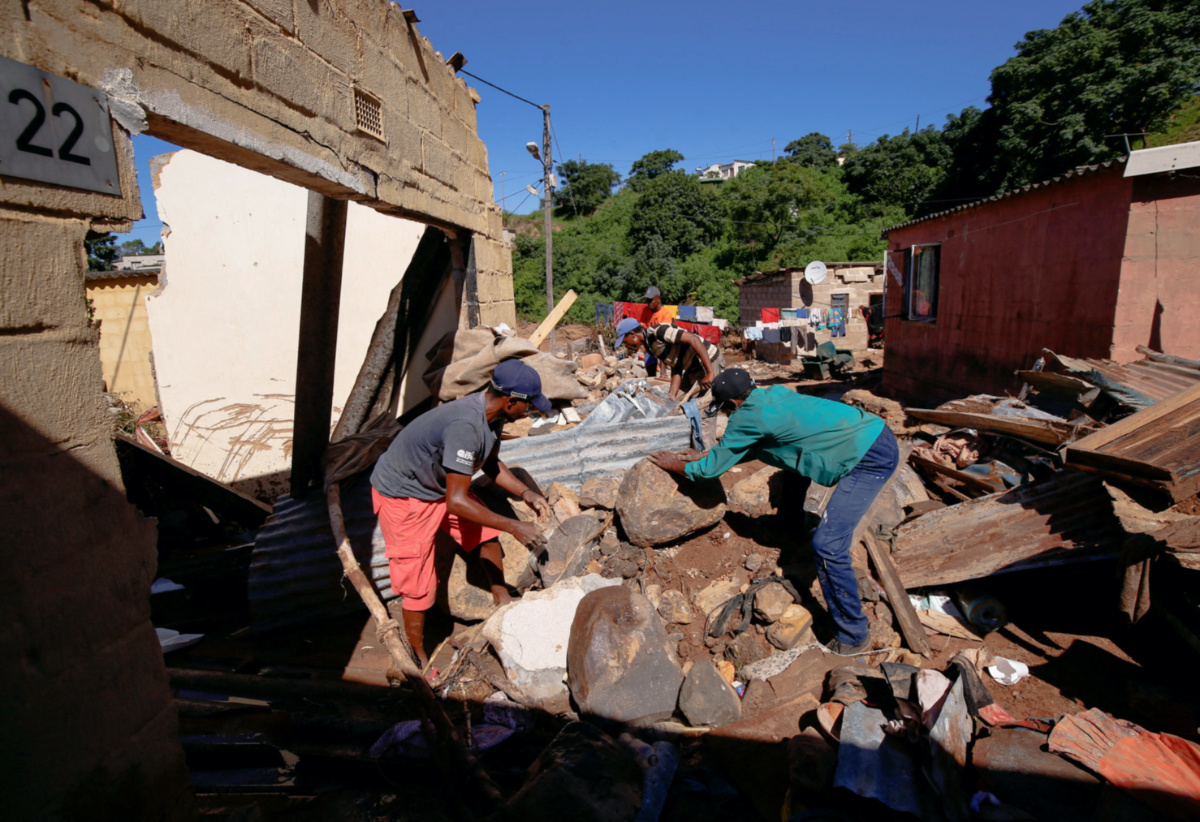London, UK
Reuters
Human activity is contributing to an increasing number of disasters, with 350 and 500 medium-sized or large disasters a year occurring globally in the past two decades and more frequent events expected, according to a UN report.
The number of disasters – many of them weather-related such as fires and floods, but also other hazards such as pandemics or chemical accidents – could reach 560 a year, or 1.5 a day, by 2030, putting millions of lives in danger, the UN Office for Disaster Risk Reduction said in its global assessment report.

Residents sift through rubble, looking for bodies after heavy rains caused flooding in Ntuzuma near Durban, South Africa, on 20th April. PICTURE: Reuters/Rogan Ward.
Climate change is causing more extreme weather events, it said, adding humans have made decisions which are too narrow in focus and have been over-optimistic about the risk of potential disasters, leaving them unprepared.
The impact of disasters has also been heightened by growing populations in areas more prone to natural catastrophes, the report said.
“The world needs to do more to incorporate disaster risk in how we live, build and invest, which is setting humanity on a spiral of self-destruction,” said Amina J Mohammed, UN Deputy Secretary-General, who presented the report at UN headquarters in New York.
“We must turn our collective complacency to action.”
Disasters disproportionately impact developing countries, which lose an average one per cent of GDP a year to them, compared to 0.1 to 0.3 per cent in developed countries, the report said.
The Asia-Pacific region suffers the highest damage, losing an average 1.6 per cent of GDP to disasters annually.
Developing countries also tend to be under-insured.
Only 40 per cent of disaster-related losses since 1980 were insured. Insurance coverage rates in developing countries were sometimes close to zero, the report said.
“The financial system really needs to get ahead of this curve, because otherwise there’s a lot of built-up risk that isn’t being priced into how we make decisions,” Jenty Kirsch-Wood, coordinating lead author of the report, told Reuters.






